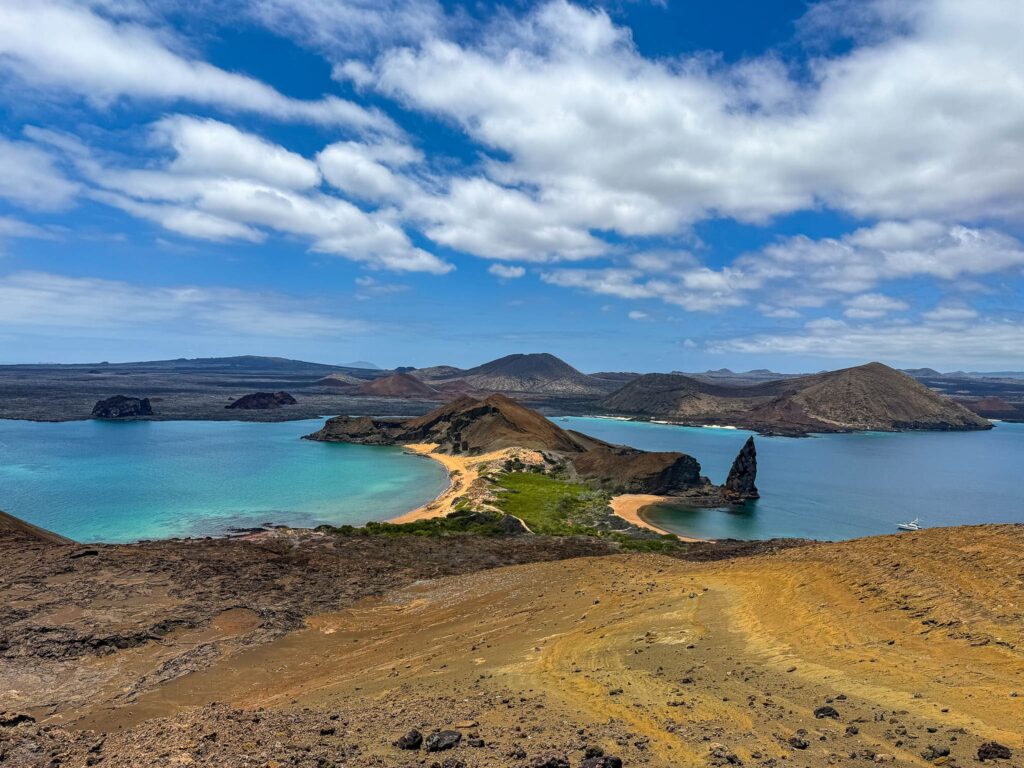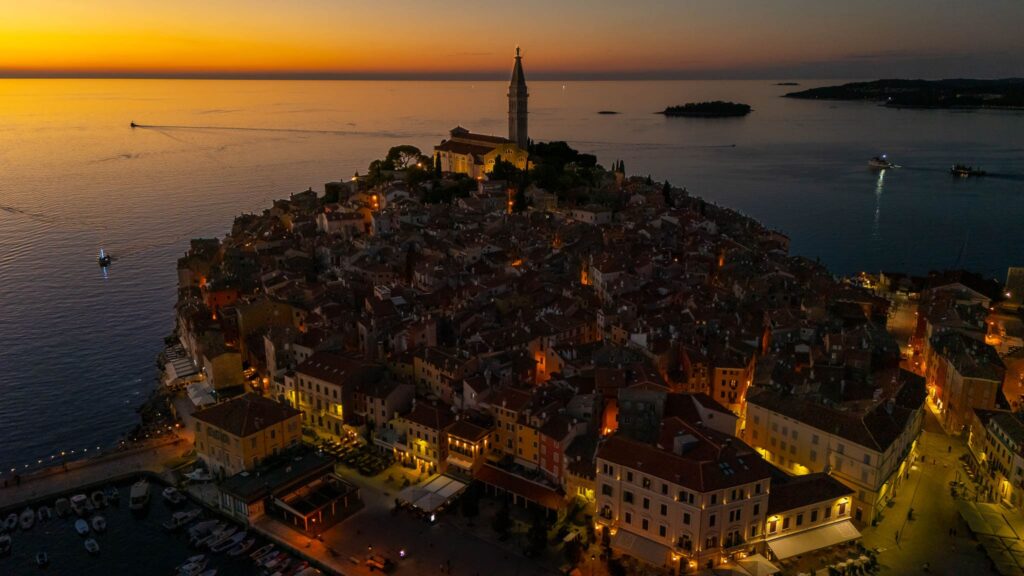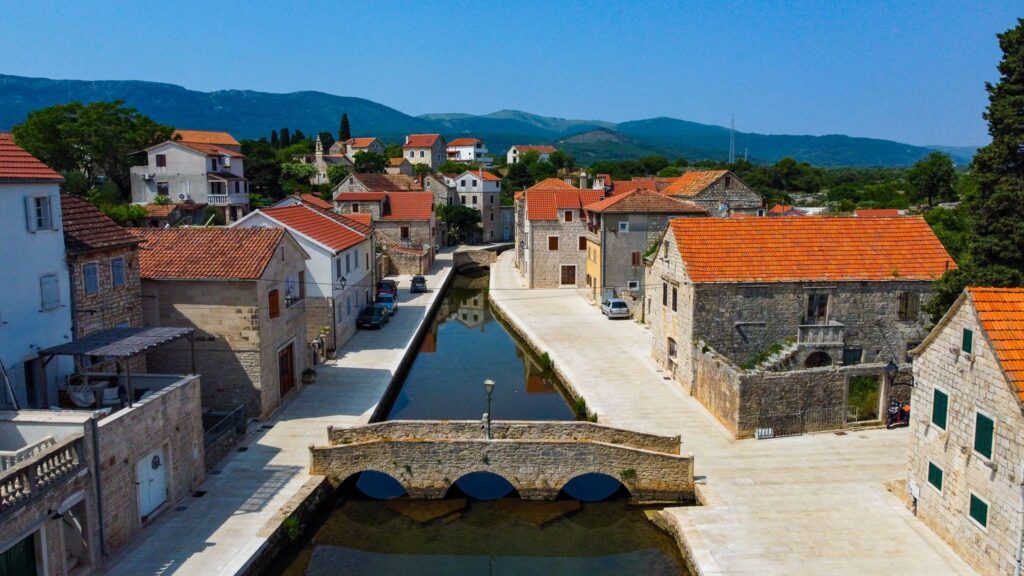Hvar Island In Four Days – The Best Of All
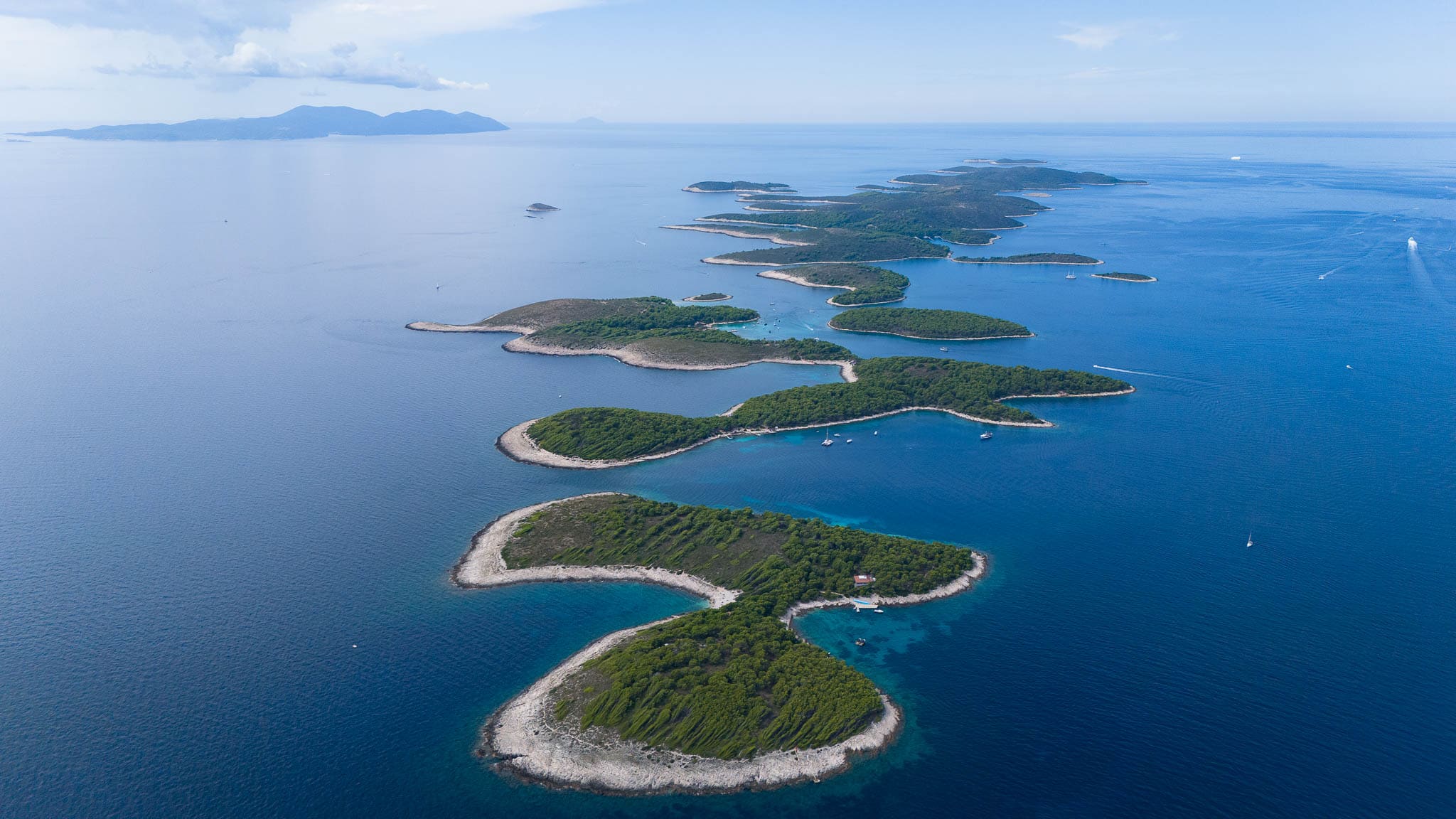
Hvar is one of the most fascinating islands in Croatia, known for its crystal-clear waters, breathtaking landscapes, and a history that stretches back thousands of years. Stari Grad, founded by the ancient Greeks in 384 BC, is one of the oldest towns in Europe and a living reminder of the island’s deep historical roots. The Stari Grad Plain, a perfectly preserved agricultural landscape laid out by the Greeks, is today protected as a UNESCO World Heritage Site, where vineyards and olive groves are still cultivated following traditional methods.
The island is also famous for its rich cultural traditions, from local folklore and music to gastronomy and the famous lavender fields that paint Hvar purple in summer. Every corner of the island is shaped by a blend of Mediterranean and Venetian influences, visible in its architecture, stone houses, and charming squares.
Over the centuries, Hvar has been a crossroads of civilisations, leaving behind fortresses, churches, and monasteries that stand as silent witnesses to its past. Today, it is both a cultural and natural treasure, balancing a vibrant lifestyle with the peaceful rhythm locals call “Pomalo” – a slower way of living, where time feels less urgent and moments are savoured.
I had the privilege of calling this island home for two summers, spending 10 months in Stari Grad. Where narrow alleys feel like a journey back in time. From here, I set out to explore every corner of Hvar, discovering hidden coves, traditional villages, and sunsets that will stay with me forever.
To fully enjoy the island, I recommend renting a car or scooter, since public buses, while reliable, don’t cover all the most enchanting spots.
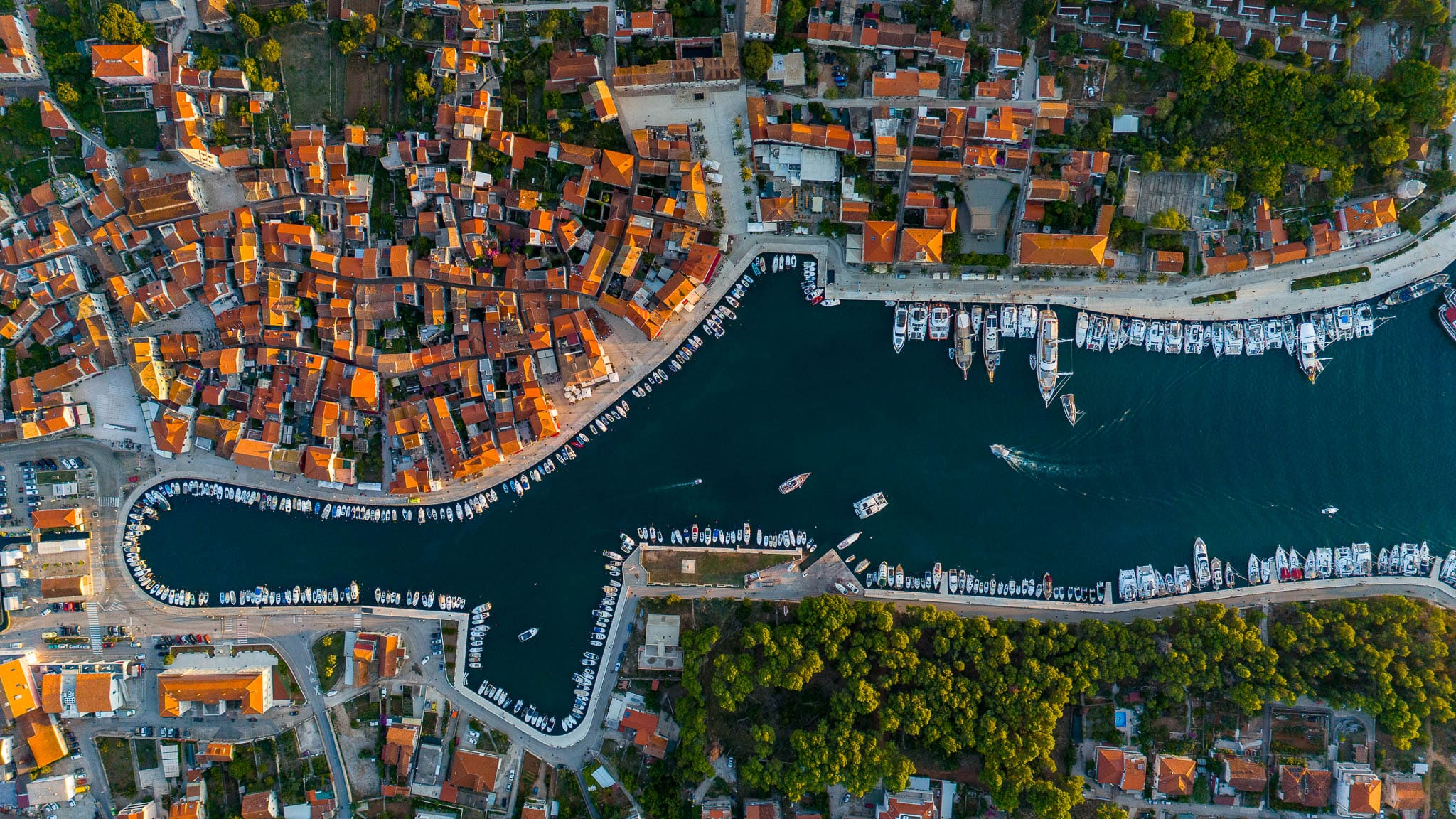
Day 1: Exploring Stari Grad
Your journey begins in Stari Grad, the heart of the island’s history and one of the oldest towns in Europe. This day doesn’t require a car – everything is within walking distance, and strolling through the narrow cobblestone alleys is part of the charm.
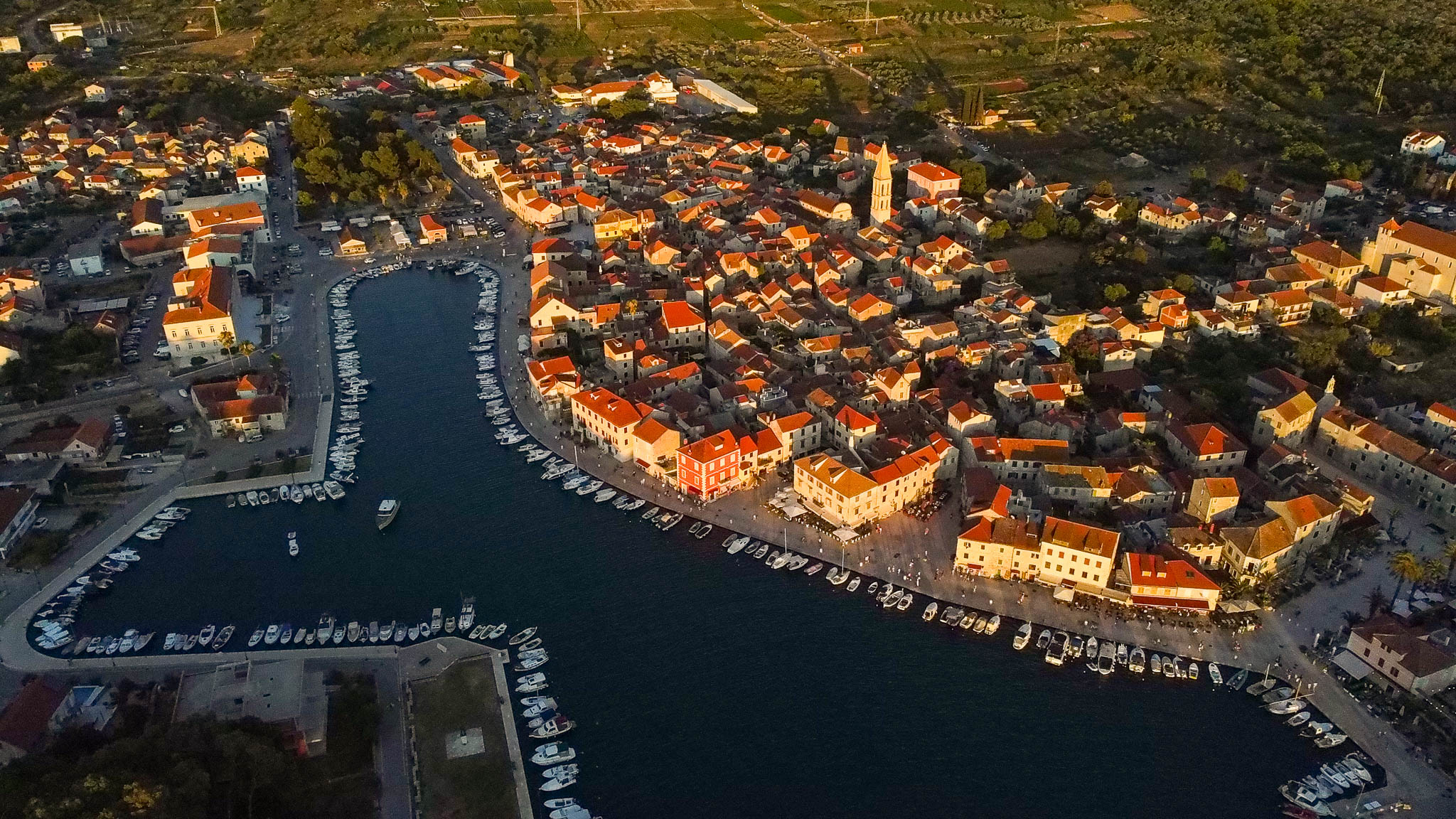
Škor Square (Trg Škor)
Start your morning in this picturesque square, once home to shipbuilders and fishermen. The stone houses with wooden balconies create a fairy-tale atmosphere.
(5 minutes walk)

Bell Tower of the Church of St. Stephen
The square’s focal point, built over the remains of an early Christian basilica, offers a glimpse into the layered history of Stari Grad.
(3 minutes walk)
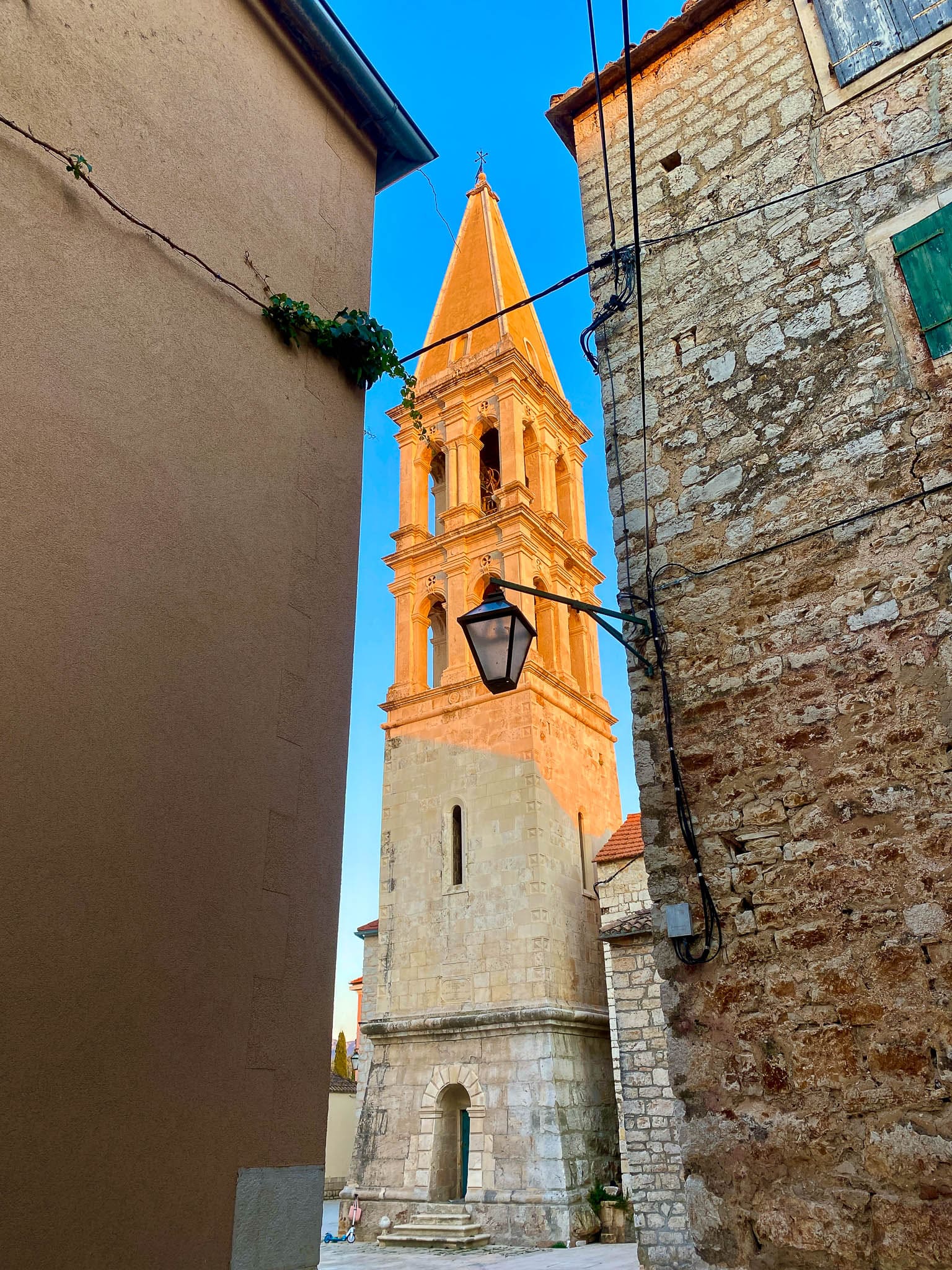
Church of St. John and the Archaeological Site of Faros
Here you can see the remains of ancient Faros, the Greek colony founded in 384 BC. The small church was built on top of Roman ruins, perfectly illustrating the continuity of life here.
(7 minutes walk)
Moria Gallery – Roman Mosaics
A hidden gem, this gallery preserves original Roman mosaics, transporting you back nearly 2,000 years.
(5 minutes walk)
Tvrdalj Castle (Fortress of Petar Hektorović)
Perhaps the most iconic landmark of Stari Grad, this 16th-century fortified villa belonged to the poet Petar Hektorović. Its fishpond surrounded by arcades and Renaissance gardens reflect the harmony between man and nature.
(6 minutes walk)
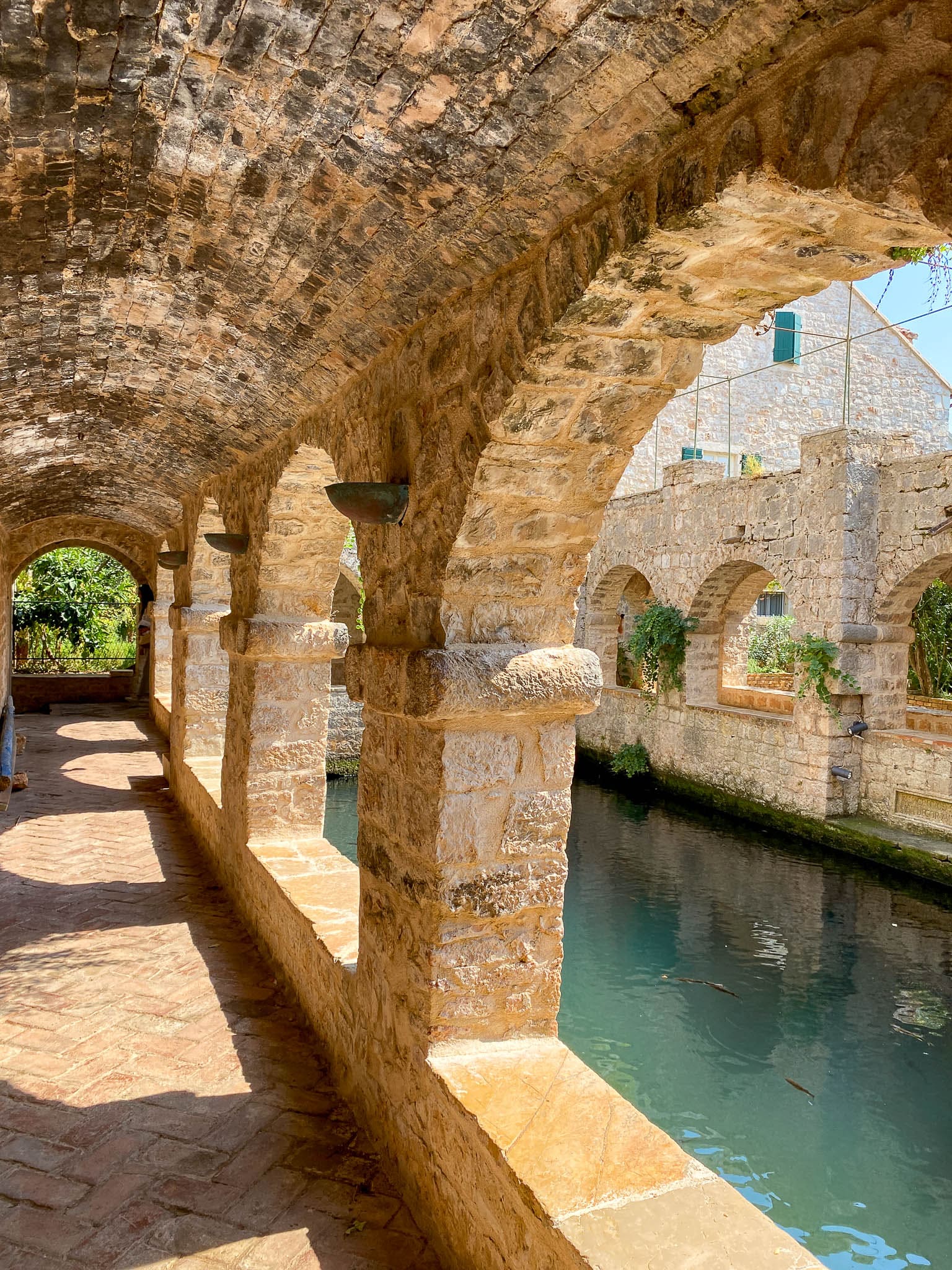

Church of St. Jerome and Stari Grad Beach
Located just outside the center, this charming spot combines history with the Adriatic coastline. Perfect for a short swim or a rest.
(10 minutes walk)

Ploche Beach
A small, peaceful beach ideal for a refreshing dip.
(10 minutes walk)
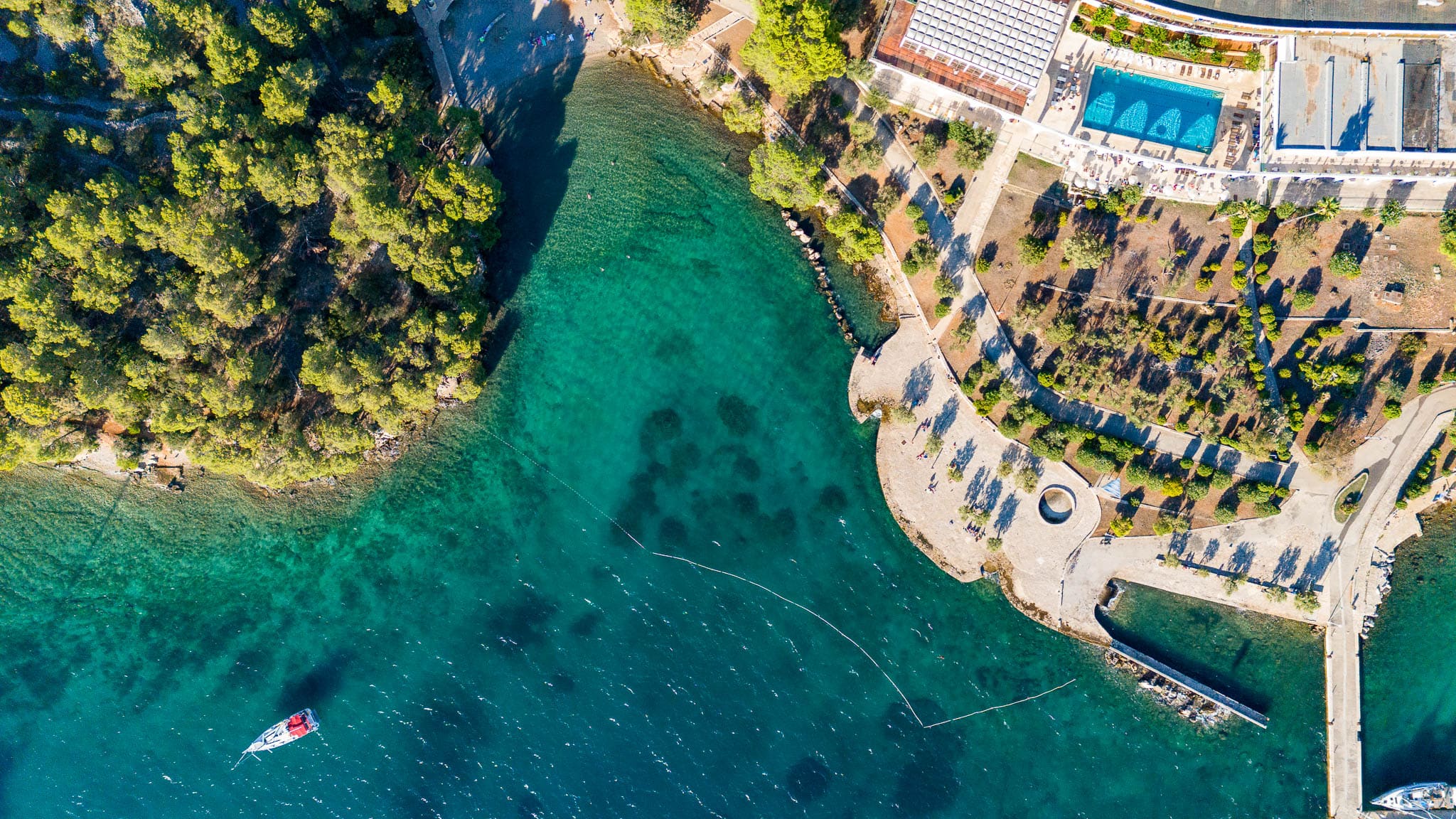
Brizenica Bay
My favorite part of Stari Grad, this bay is a true escape where turquoise waters meet untouched landscapes. Bring snacks, a towel, and simply enjoy the calm.
(10 minutes walk)

White Cross Viewpoint (Bijeli Križ)
End the day by hiking up to the white cross that overlooks the town. The path takes about 20–25 minutes uphill, but the panoramic sunset views are absolutely worth it.
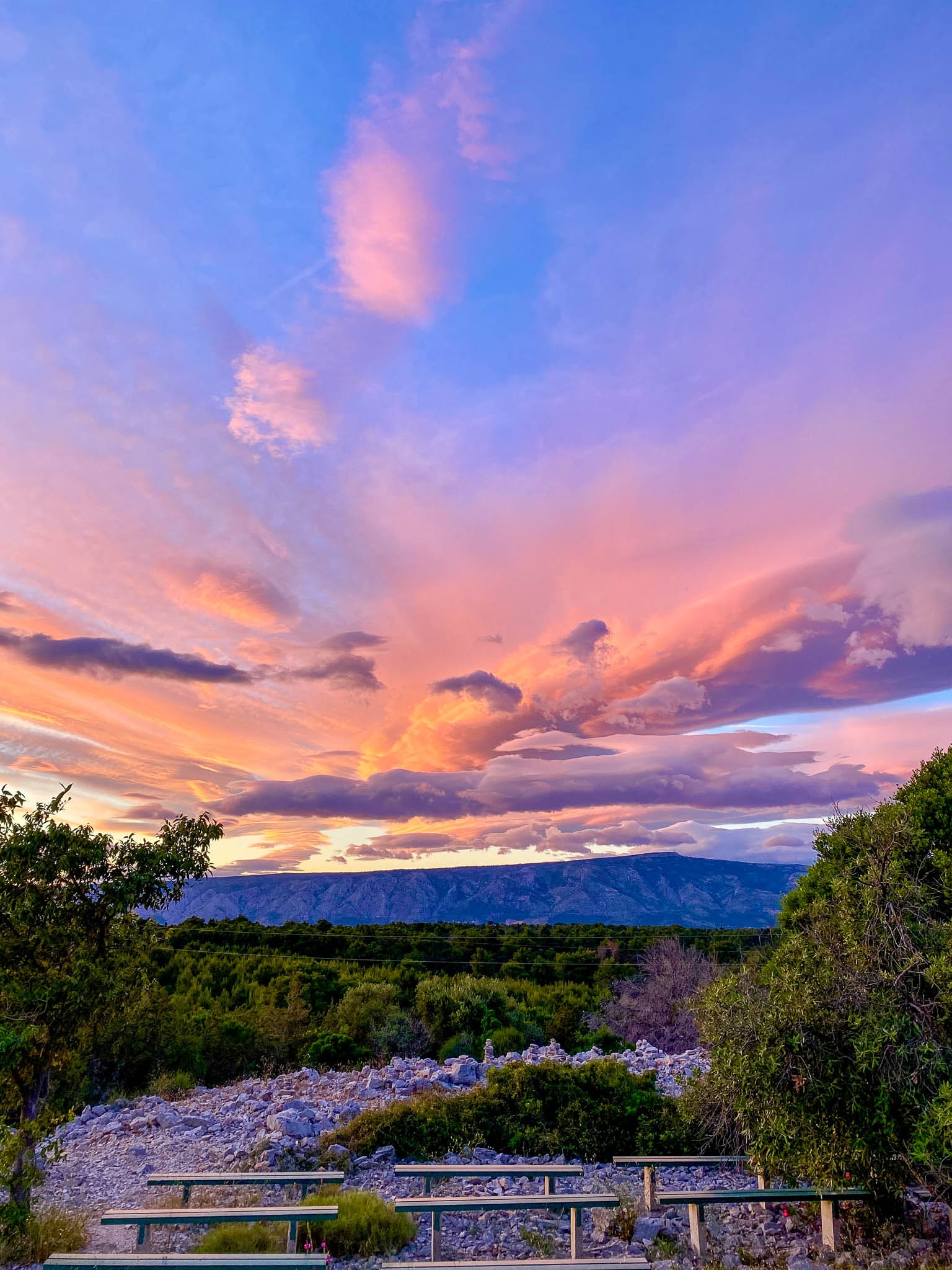
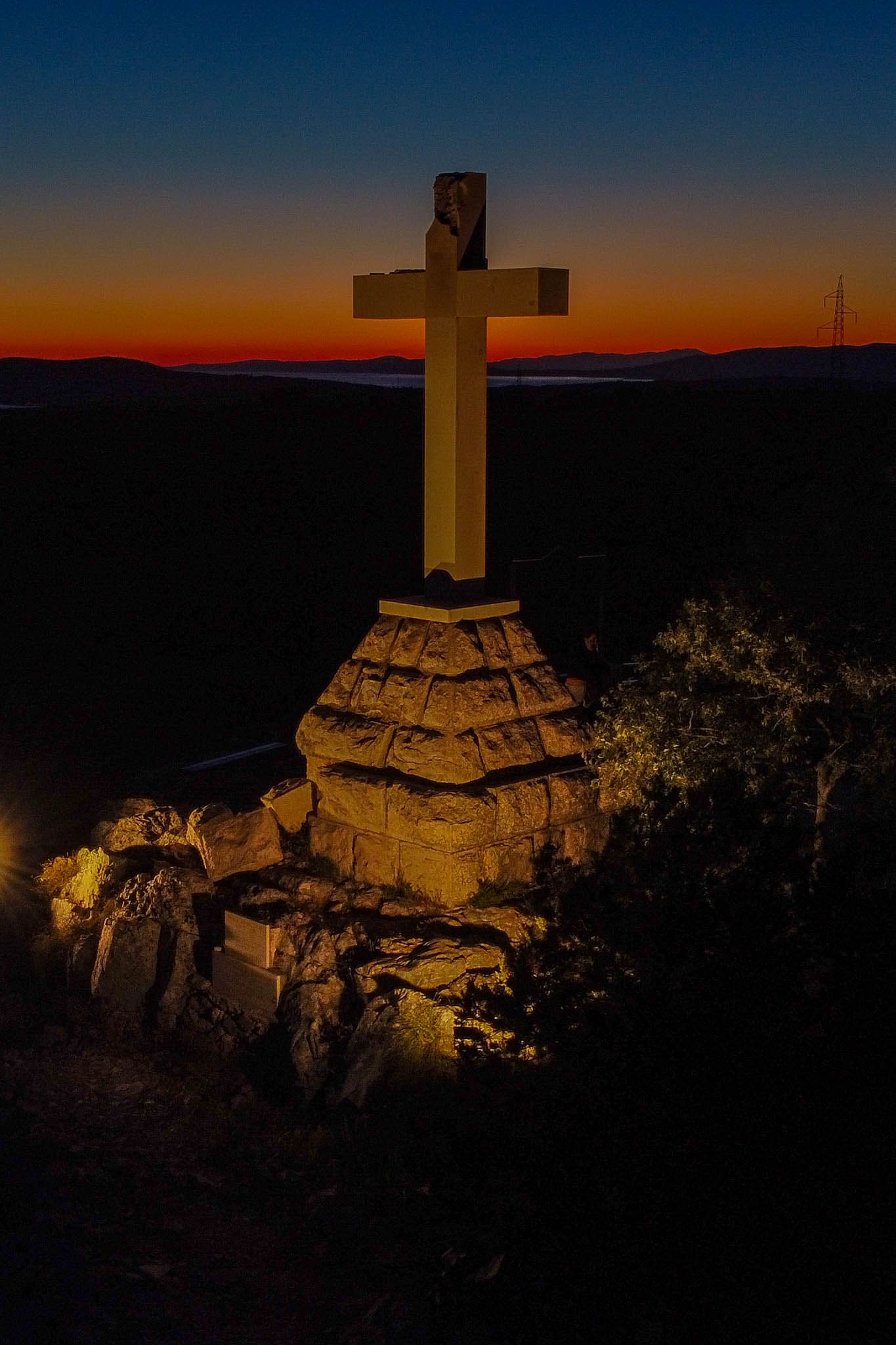
Day 2: The Southern Villages and Hidden Beaches
For the second day, rent a car or scooter and head south. This is where Hvar reveals some of its wildest landscapes and most authentic villages.
Drive through the villages of Vrbanj, Svirče, and Vrisnik – Each of these small stone towns has its own unique charm, where time feels frozen.
(About 15–20 minutes driving total)
Tunnel Pitve
A true adventure! This one-lane tunnel is unlit and carved directly through the mountain. The drop in temperature inside makes it an unforgettable experience. On the other side, the landscape opens dramatically to the southern coast.
Zavala
A tranquil village famous for its crystal-clear beaches and vineyards. Spend some time at Plaža Zavala before continuing your journey.
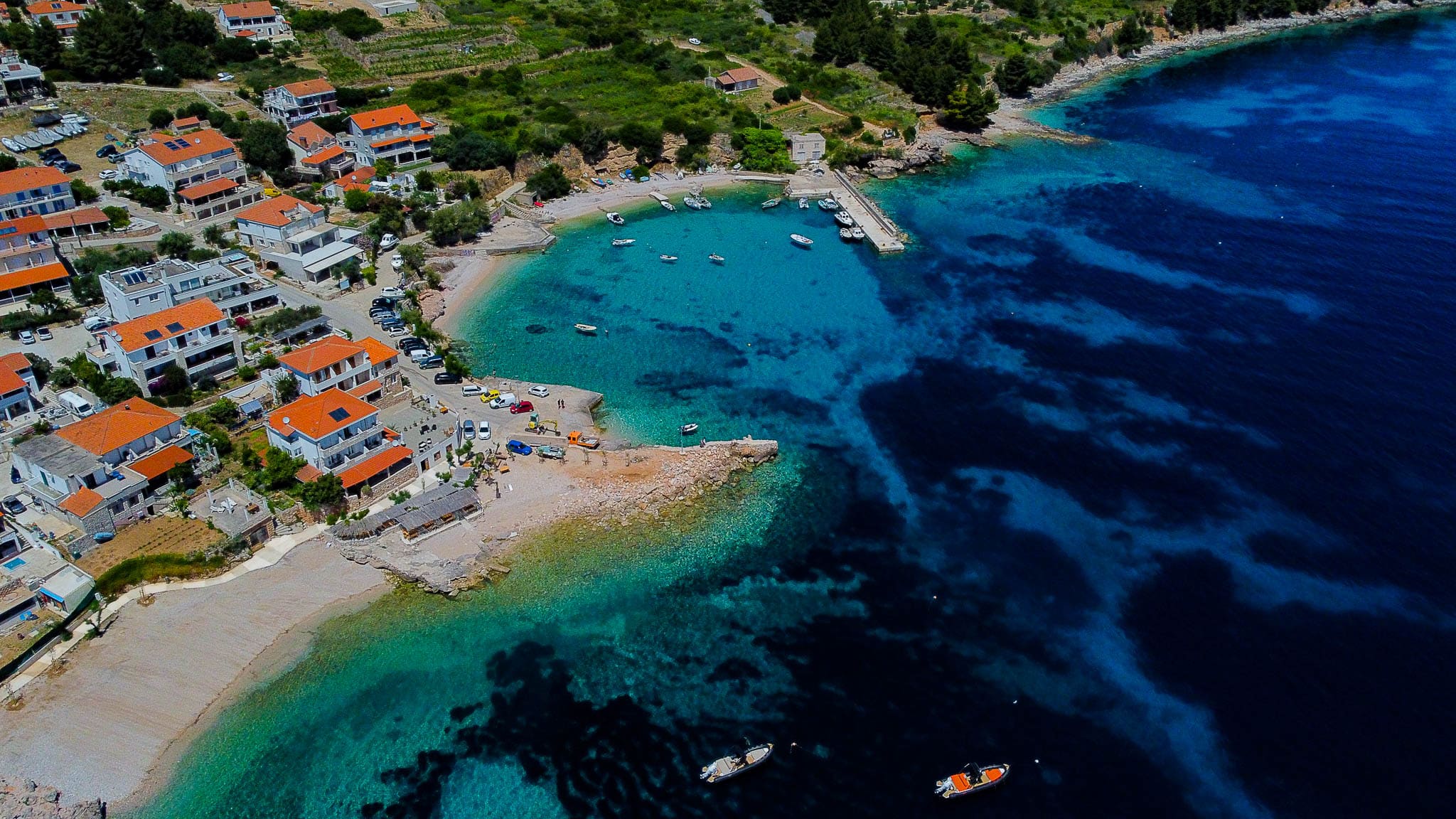
Sveta Nedilja
Nestled between steep slopes and the sea, this village is known for its award-winning wines. Have lunch in Bilo Idro by the water. A family-run restaurant where you can also visit their wine cellar filled with trophies. Don’t miss the window in the cellar wall that opens directly to the sea, where you can spot fish swimming under the stone foundation.
(20 minutes drive from Zavala)
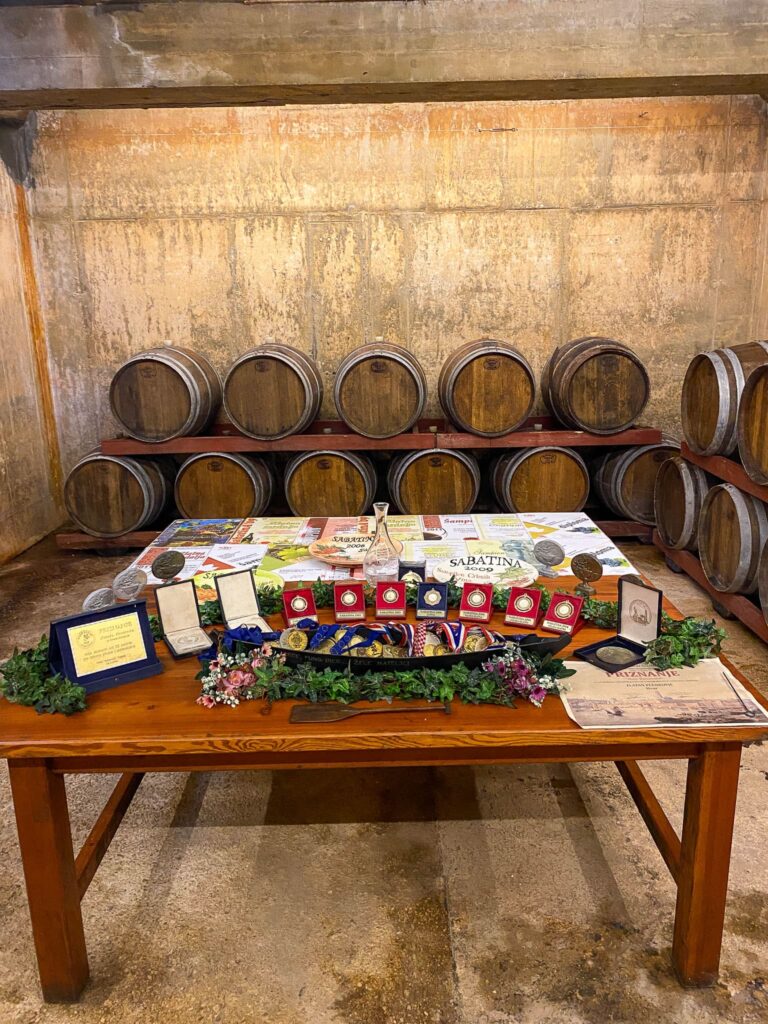
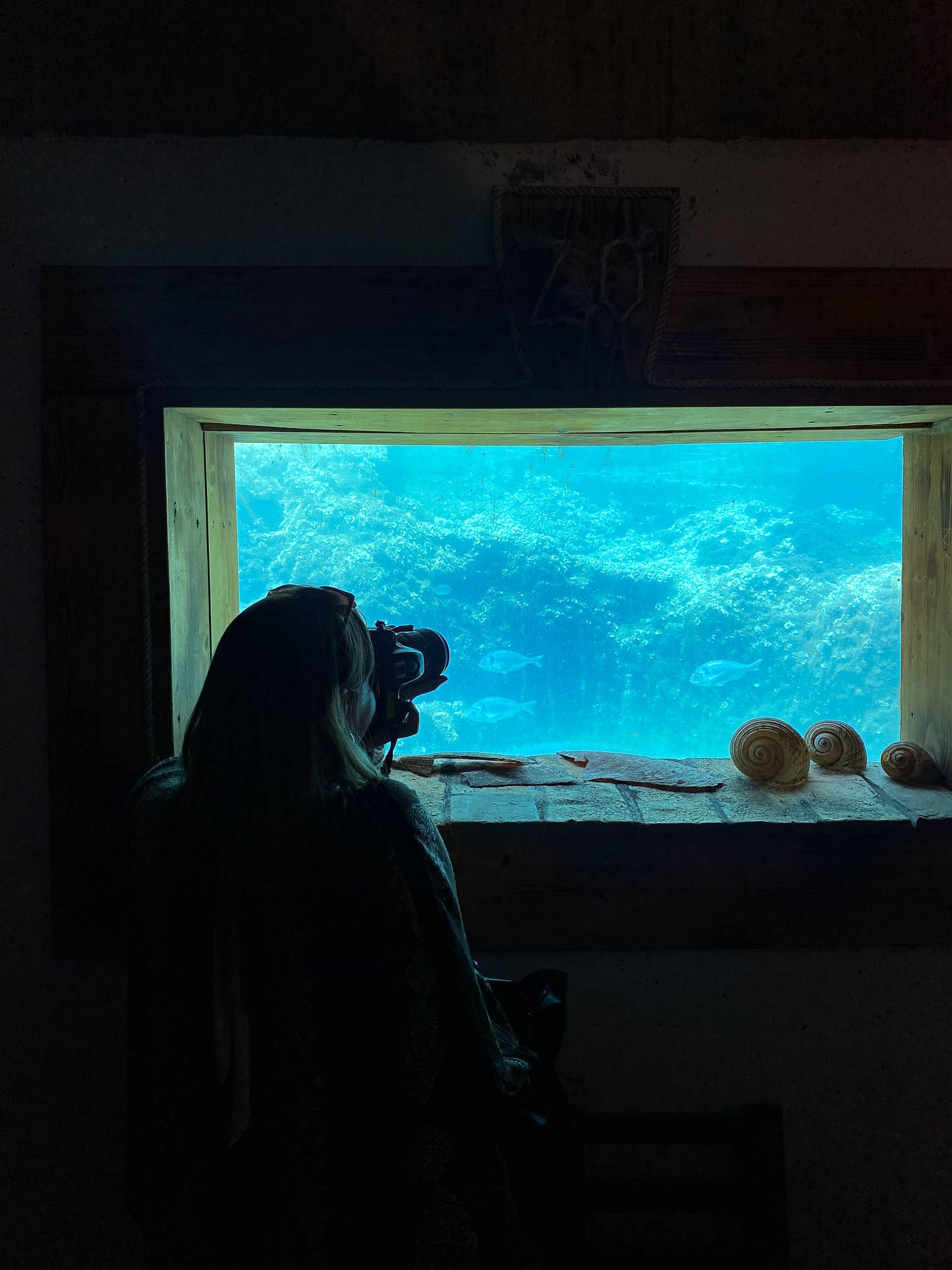
Veli Kamik
A solitary tree growing on a rock by the sea, with a bench nearby. A magical place for contemplation.
Zogon Beach
A hidden gem, reached by walking along a scenic coastal path. The beach is striking, with a large rock in the center crowned by a single pine tree.
(20 minutes walk from Sveta Nedilja)
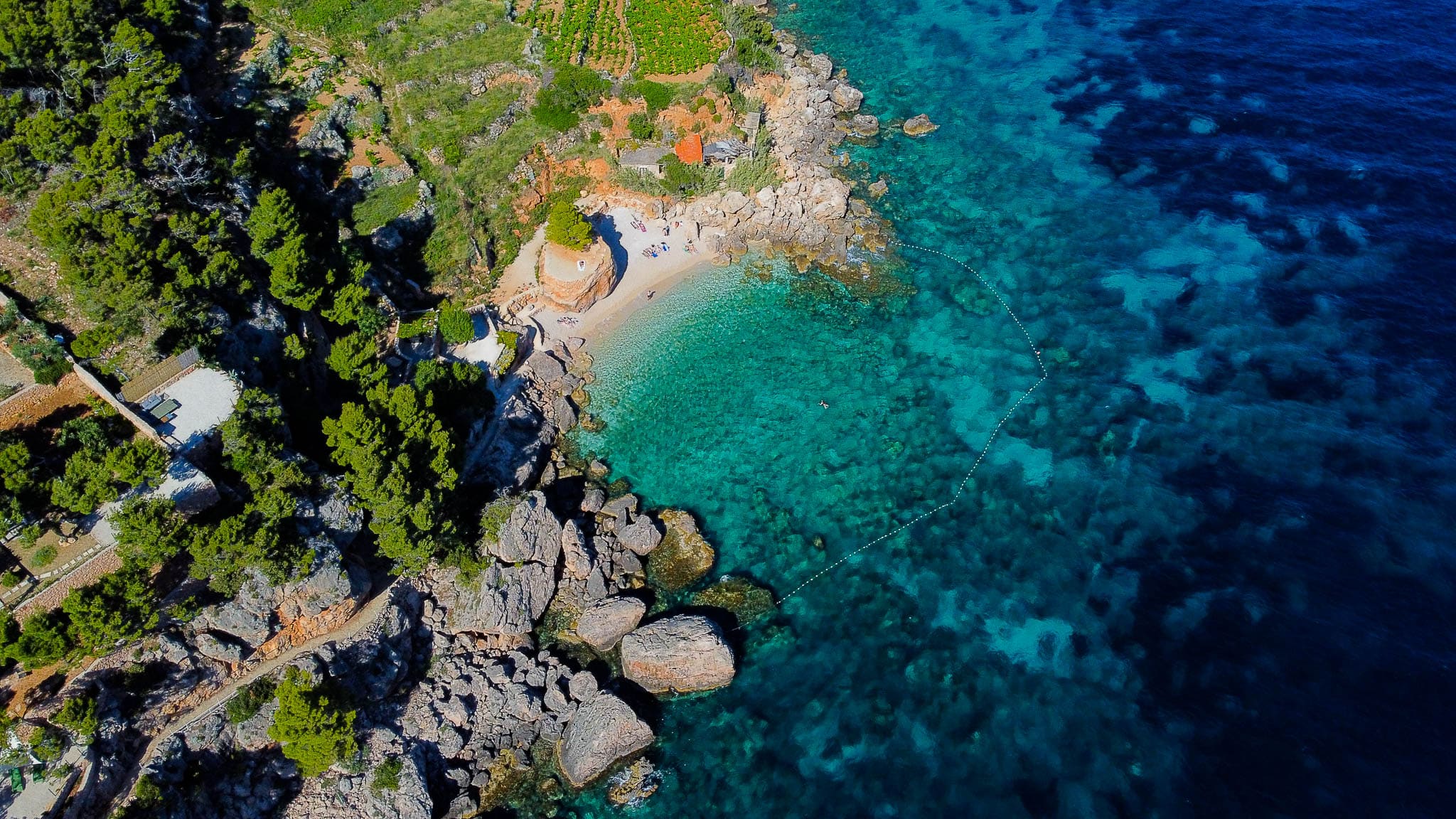
Dubovica Beach
One of the most beautiful beaches on Hvar, framed by a 17th-century stone villa. The beach is wide and inviting, perfect for ending the day. You can reach it either by returning through the tunnel (40 min) or by taking a 25-minute coastal dirt road drive.
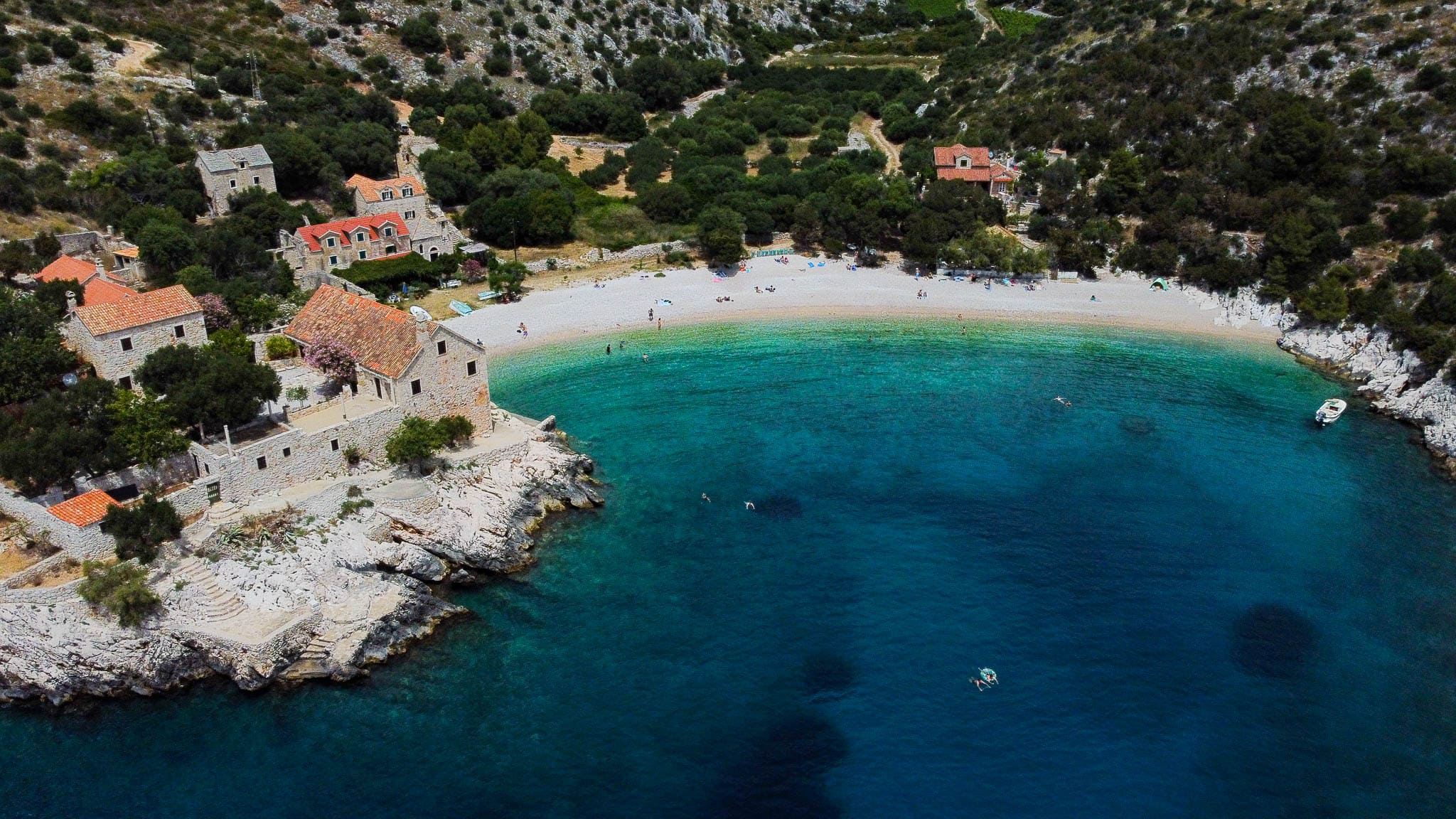
Day 3: Hvar Town and the Paklinski Islands
Today you’ll discover the capital of the island – Hvar Town, a vibrant mix of history, nightlife, and natural beauty. Park your car at the lot labeled “the cheapest parking in Hvar” (around €1 per hour).
St. Stephen’s Cathedral
Located in the main square, this 16th-century cathedral is the heart of Hvar Town.
(2 minutes walk)
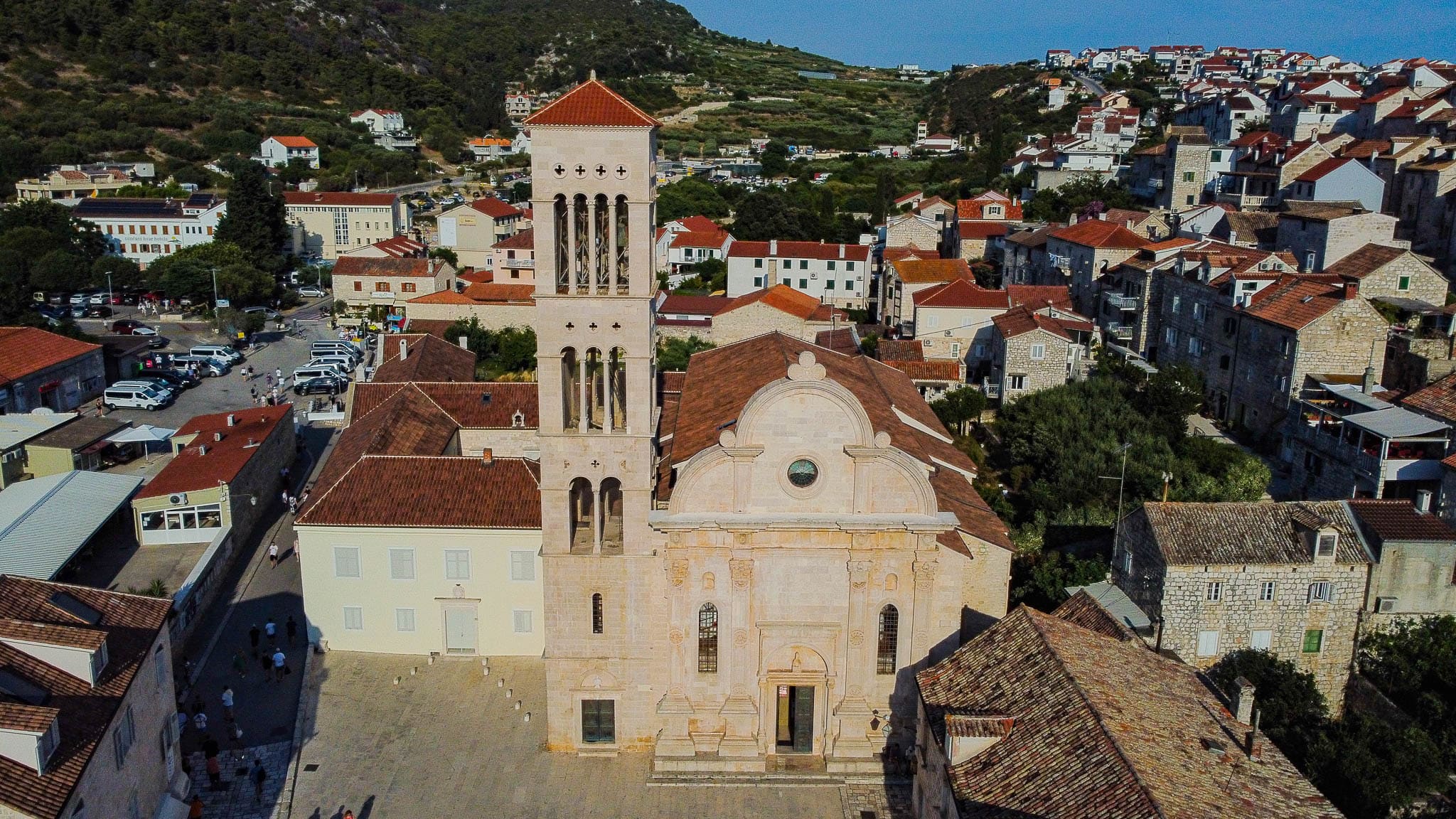
Hvar Fortress (Fortica/Španjola)
A short hike (15–20 minutes uphill) leads to this fortress, built in the 16th century to defend against the Ottomans. The panoramic view over the harbor and Paklinski Islands is unforgettable.
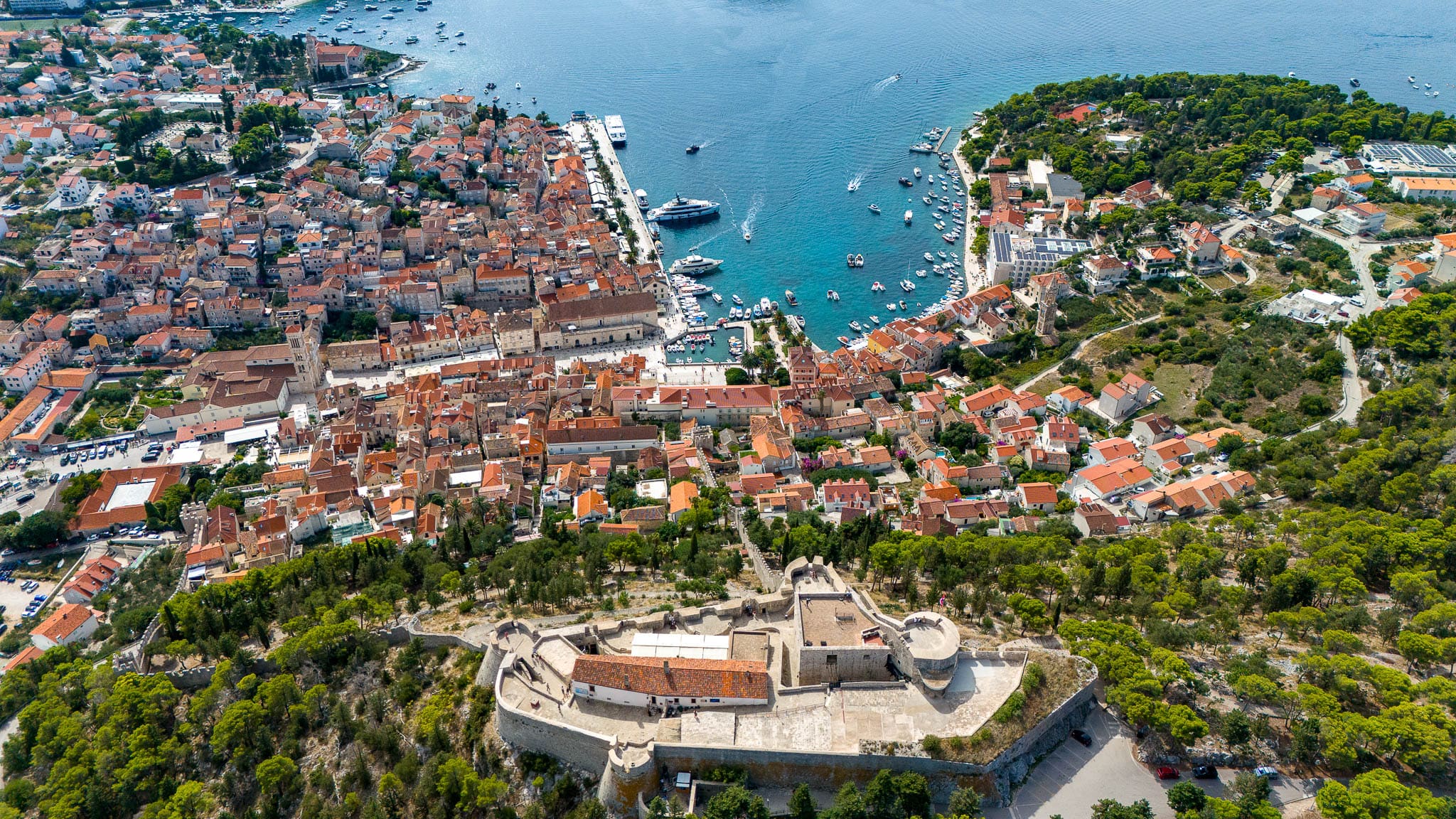
Paklinski Islands Tour
Highly recommended. Tours usually run from 11:00 AM to 5:30 PM and include the Red Rocks (a cave-like formation where you can swim inside) and several stunning bays. The water here is a glowing electric blue, perfect for cliff jumping or snorkeling.
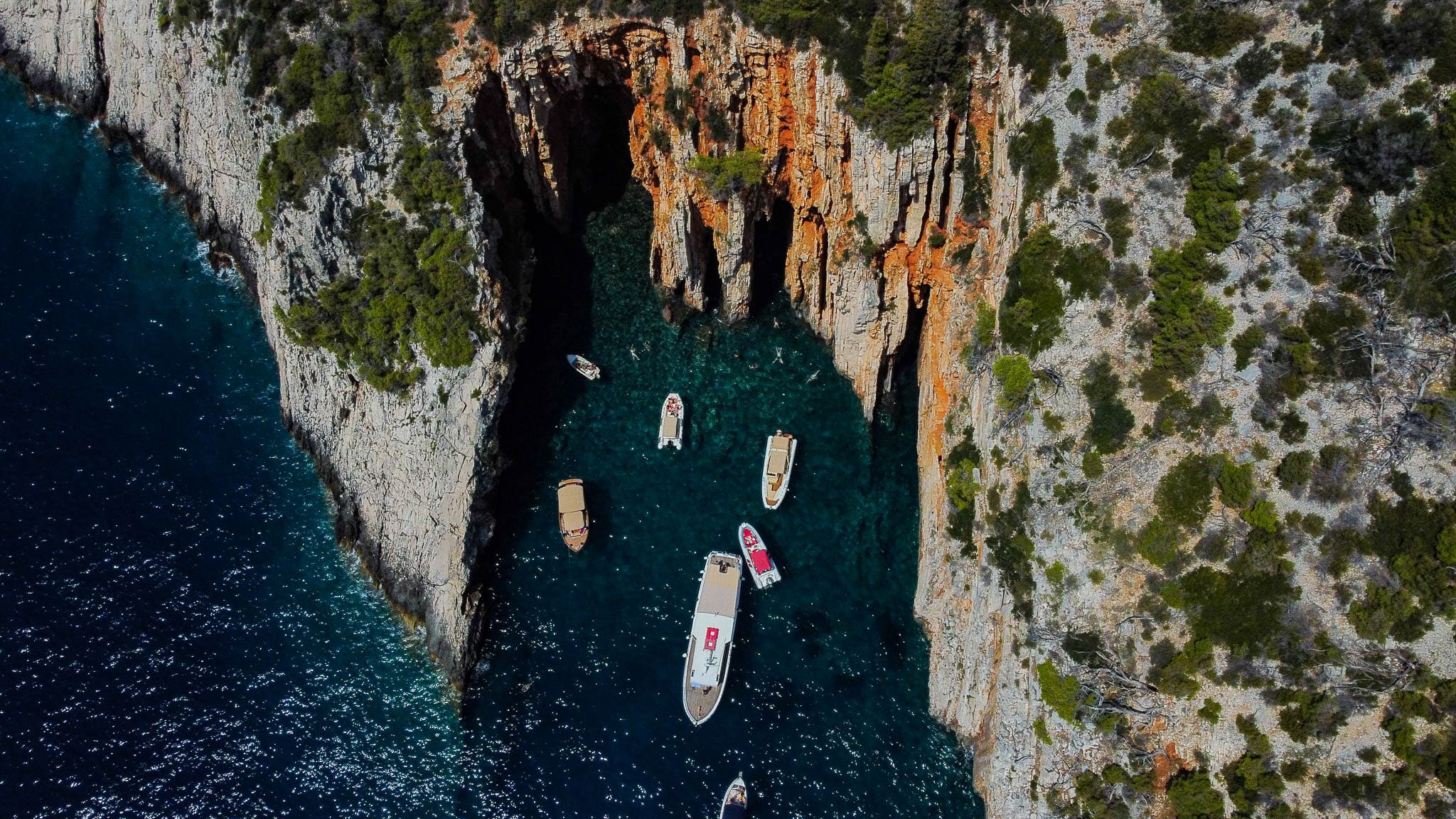
Napoleon Fortress (Fort Napoljun)
End the day with one of the most spectacular viewpoints on the island. From here, you can watch the sunset over Hvar and the Paklinski Islands.
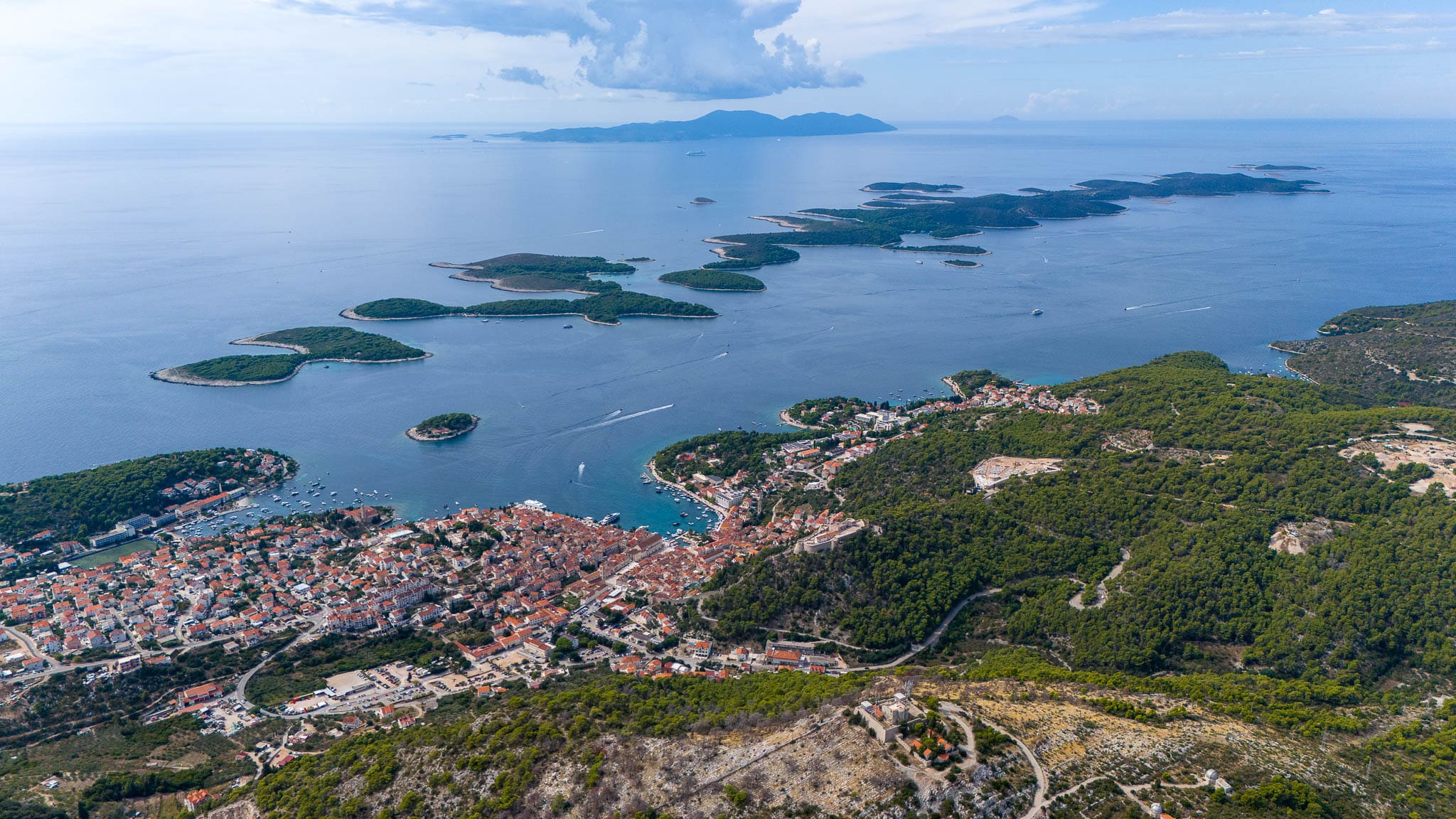
Day 4: Vrboska, Jelsa, and Humac
Your final day explores the northern side of Hvar, where traditions feel even stronger.
Vrboska
Often called the “Little Venice of Hvar”, this charming town is built around a narrow canal crossed by stone bridges. It’s the perfect spot for a morning coffee. Nearby, you can find secluded bays for a quick swim.
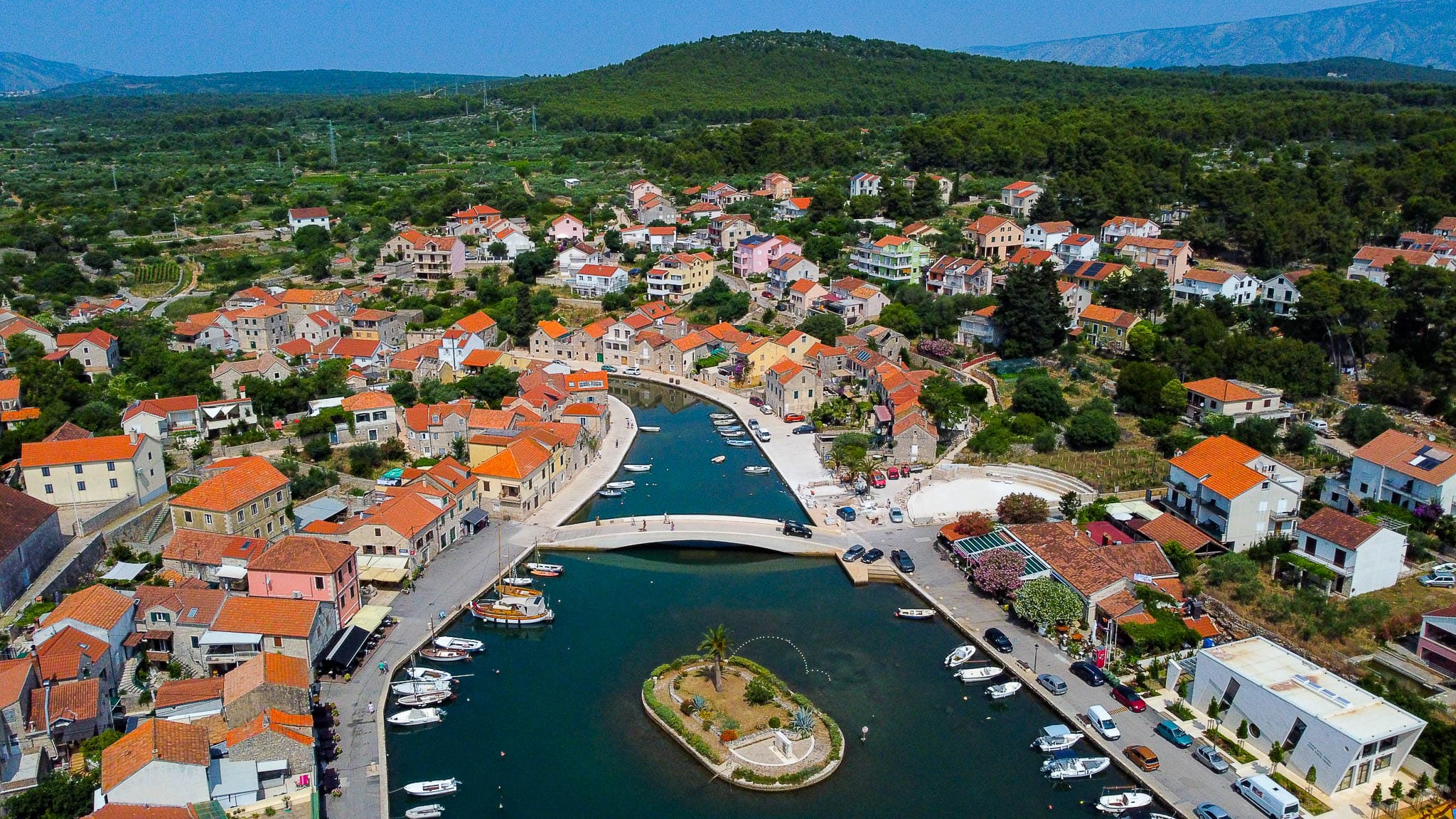
Jelsa
The second-largest town on the island, with a lively historic center and plenty of restaurants. It’s a great place to stop for lunch and wander through its picturesque streets.
(10 minutes drive from Vrboska)
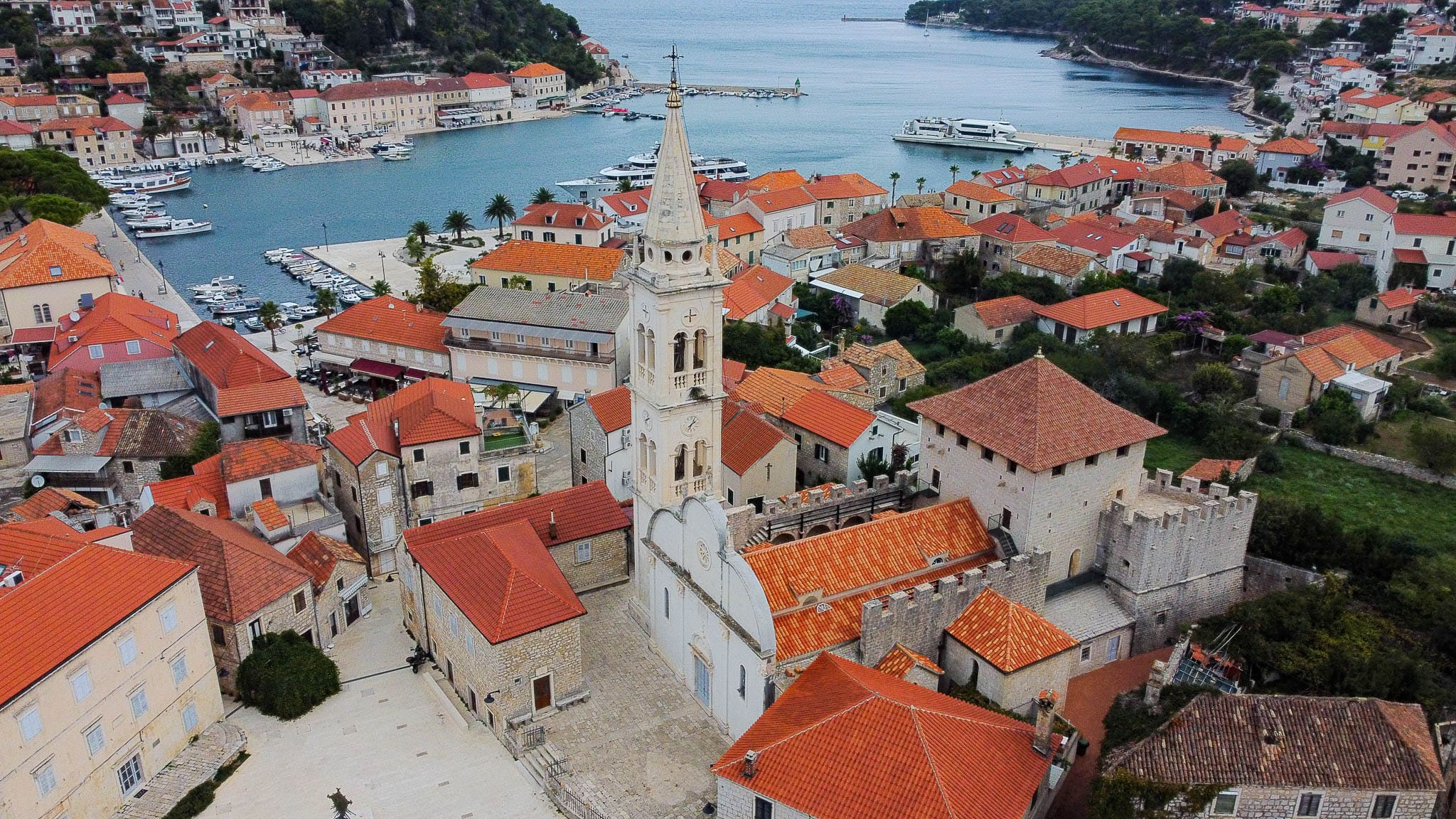
Mina Beach
A beach just outside Jelsa where you can relax after lunch. It combines sandy areas with rocky platforms, perfect for swimming and sunbathing.
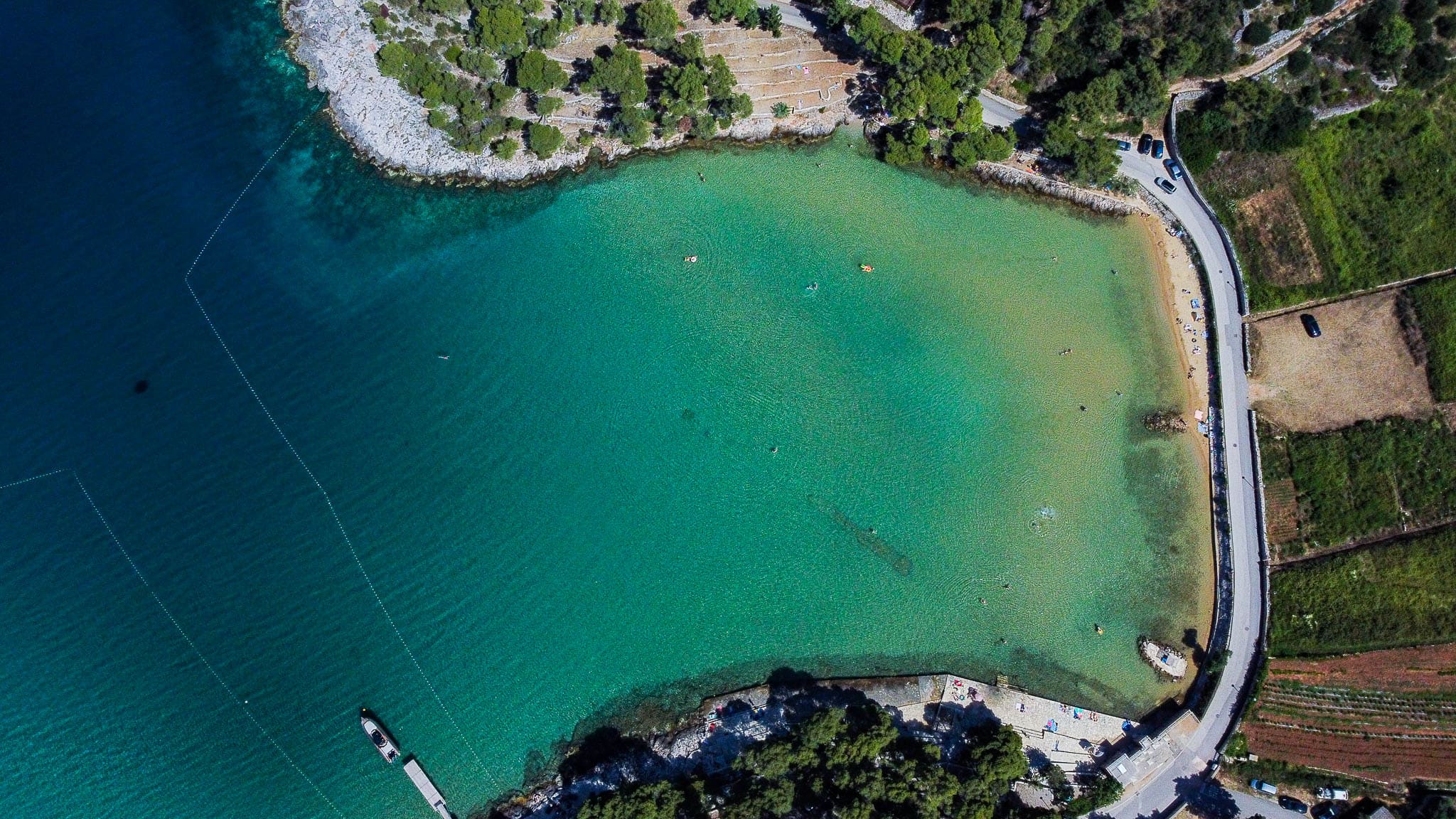
Humac
End your adventure in this ancient stone village, where everything – houses, walls, and roofs – is built from dry-stacked stone without cement. Dining here is a truly authentic experience: a candlelit restaurant with stone tables and sea views, serving traditional dishes cooked over an open fire.
(25 minutes drive from Jelsa)
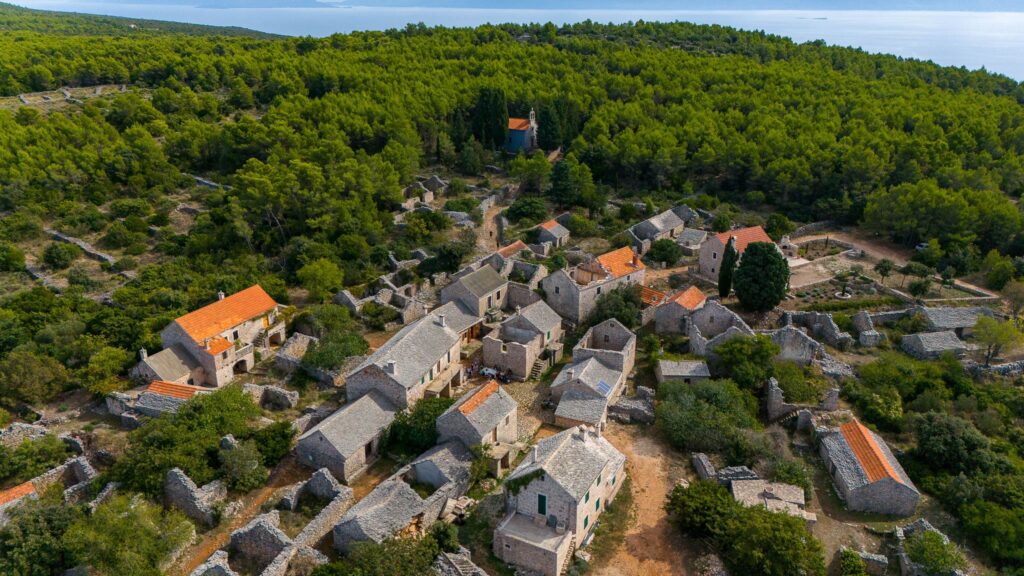
Extra Tips
If you have more time to spend on Hvar, there are plenty of ways to extend your adventure:
- Try a traditional Peka dinner – This slow-cooked dish of meat or vegetables with potatoes, prepared under a metal bell covered with embers, is one of the most authentic Dalmatian experiences. The best place to enjoy it is in a remote, half-abandoned mountain village where the only building still alive is a family-run restaurant.
- Day trip to Zlatni Rat – Located on the nearby island of Brač, Zlatni Rat is one of Croatia’s most famous beaches, known for its unique golden tongue of pebbles stretching into the turquoise Adriatic.
- Explore the island of Vis – A magical island where the movie Mamma Mia! Here We Go Again was filmed. Don’t miss the famous Blue Cave, which glows in surreal shades of blue as sunlight reflects inside, or the island’s pristine beaches and rugged coastline.
No matter how many days you spend here, Croatia will always surprise you with more hidden treasures waiting to be discovered. From ancient towns and UNESCO-protected landscapes to secret beaches and unforgettable sunsets, Hvar remains a place where history and nature come together in perfect harmony.
Always Travel to Exist.

